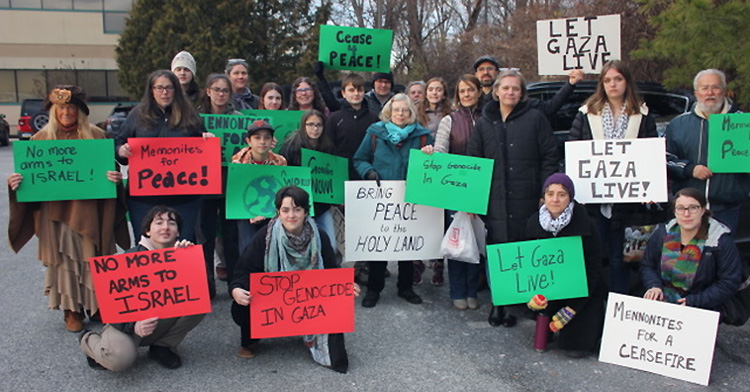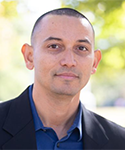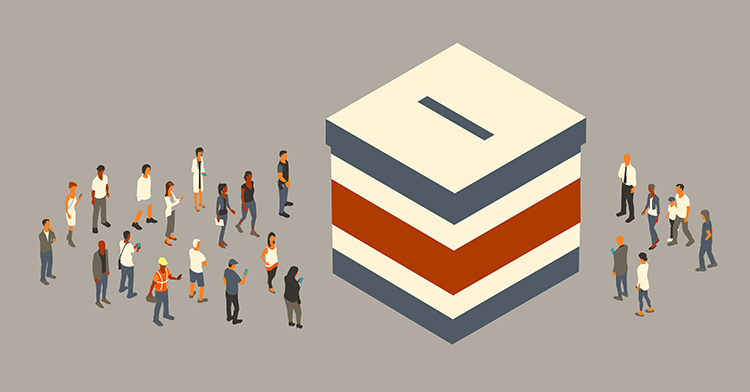Robert P. Jones is the CEO of Public Religion Research Institute in Washington, D.C., a nonpartisan nonprofit that focuses on the intersection of religion, values and public life.
Using public opinion surveys and qualitative research, PRRI seeks to understand and inform the public about religion in American life.
 Digging into the data adds some surprising nuances to familiar narratives about the church, the religiously unaffiliated and the influence of Christian leaders, Jones said.
Digging into the data adds some surprising nuances to familiar narratives about the church, the religiously unaffiliated and the influence of Christian leaders, Jones said.
“We do take theology seriously,” Jones said. “Understanding … what happens when theological ideals are enmeshed in congregational life is certainly very helpful as a survey researcher.”
Jones, who earned an M.Div. from Southwestern Baptist Theological Seminary and a Ph.D. in religion from Emory University, writes “Figuring Faith” for the On Faith blog network of The Washington Post.
He is the author of two books, “Progressive & Religious: How Christian, Jewish, Muslim and Buddhist Leaders Are Moving Beyond the Culture Wars and Transforming American Public Life” and “Liberalism’s Troubled Search for Equality.”
Jones spoke to Faith & Leadership while at Duke University to give a lecture as part of the Religions and Public Life initiative. The following is an edited transcript.
Q: What trends do you see in American religious life that you think are underreported or underappreciated?
Clergy are going to have to grapple with not just the increasing pluralism in their communities but the increasing pluralism in their pews.
Rates of intermarriage are going up. A significant number of Americans are switching their religious affiliation. I think the days of standing in the pulpit looking out in the pews in a Presbyterian church or a Methodist church and thinking most of these people in here are cradle-to-grave are gone.
More than three in 10 Americans are switching their religious affiliation at least once -- and I don’t just mean Methodist to Presbyterian. I mean Catholic to mainline Protestant or Muslim to Buddhist. They’re big switches, not just denominational trades.
The other, I think, really interesting thing is the ways in which the ideological divides in the country over things like abortion and, increasingly, same-sex marriage have in some very complex ways lowered the boundaries between denominations.
For example, the Catholic Church is in the process of creating special categories to receive converts from Anglicanism who are disaffected with the more liberal trends in Anglicanism or to receive conservative Lutherans who are mad about the Lutherans’ position on affirming openly gay pastors.
That’s a really interesting set of circumstances -- a kind of ideological sifting that’s been going on for quite some time -- but these institutional channels are designed to speed that process up as the barriers come down for people.
One thing that has gotten some ink, but we just haven’t fully felt its impact, is the rise of the unaffiliated in America.
In the early 1990s, we were in the single digits for how many people in America said they had no religious affiliation. We’re now at 19 percent. In a very short time, those numbers have nearly tripled, and among young people you’re looking at about a third of young people saying they have no religious preference.
Q: What have you learned about the unaffiliated?
We were able to identify three subgroups among that 19 percent of the country that now calls itself unaffiliated.
The first one is, I guess, one that everybody is not surprised about -- atheist and agnostic. That’s about four in 10 of that unaffiliated group.
Another four in 10 are people who say they’re not atheist or agnostic but they’re just kind of secular. They’re not religious, but they’re also not atheist or agnostic.
Then the last group, which I think is one of the more interesting subgroups that really hadn’t been identified prior to this survey a few months ago, was a group that we called “unattached believers.”
These are people that by most measures are pretty religious people, but yet when you ask them what is their religion, they say “nothing in particular.”
They tend to be more minority. They tend to be a little bit lower-educated. They believe in a personal God. They say they attend religious services a few times a year at least, but yet they’re not attached to a religious tradition.
Q: Are those the “spiritual but not religious” folks that you hear about?
I think they’re actually religious -- just not institutionally religious.
If you didn’t know that they had said “nothing in particular” and you just looked at [whether] they have a literal view of the Bible, do they believe in a personal God, do they attend religious services a few times a year, you would call them religious.
That’s why we label them unattached believers -- because they believe. They believe many of these traditional theological beliefs. They’re just not connected to an institutional form of religion.
Q: Are they Christian?
We don’t know. When you ask them, “Are you Protestant, Catholic, Jewish?” -- and we even have a follow-up question and ask, “Is it a Christian religion?” -- they just say, “I’m nothing in particular.” That’s it.
From the profile, you would surmise -- given that many of them are African-American or Latino and that most African-Americans and Latinos are Christian -- that many of them at least came out of a Christian context, but we don’t really know a lot about who they are and why they’re there and why they say “nothing in particular” despite having all these very traditional religious beliefs.
Q: That might have some interesting implications for evangelism.
Yeah. That group is pretty big. More than one in five of the unaffiliated group is in that unattached believers group. If you’re thinking from a clergy perspective, these are people who already share many beliefs that people in the pews do. They just, for one reason or another, are not connected to an institutional church.
Q: You have an M.Div. from Southwestern Theological Seminary and a Ph.D. from Emory. How does that background affect your work?
There aren’t that many pollsters who do survey data research who have a theology degree.
It’s often very helpful to have an insider’s understanding of how theology works on the ground and in people’s fairly messy lives. Understanding not only just the philosophical side of it but what happens when theological ideals are enmeshed in congregational life is certainly very helpful as a survey researcher.
We do take theology seriously. I think too often in political science there’s a kind of “demographics is destiny” sort of thinking, and that what’s really driving things is region or gender or education levels or income levels.
Certainly, those things are very powerful predictors. But if you overlook, for example, what does having a literal view of the Bible mean for your position on any range of issues, or what difference does being a regular church attender make in how you vote, you really do miss things that are independent predictors of people’s behaviors and opinions.
Q: You often hear people in mainline institutions concerned about their declining influence, and I wonder whether you think that perception is correct.
What I think is important to remember is that the mainline Protestants still make up 17 percent or so of the country. That’s a sizable population to pay attention to. They tend to vote even at numbers slightly higher than that, so they’re a fairly reliable set of voters.
Both parties should not be writing them off -- not only because of their size but because they tend to be one of two religious groups in the American religious landscape that are divided between the two parties.
Historically, mainline Protestants were a bedrock Republican constituency, but that’s been moving into more of a Democratic constituency.
They voted for Romney. They voted for McCain, but barely. So they’re a constituency that’s very interesting in the American religious landscape.
They also are heavily represented in swing states: Missouri, Pennsylvania, Minnesota -- the Midwest heartland where elections are won or lost.
Q: What’s the other religious group that is divided between the parties?
The other one is Catholics. What’s a little misleading about that is that, whereas mainline Protestants basically cohere, Catholics have two very different subconstituencies.
There are Latino Catholics and white Catholics. Latino Catholics supported President Obama, and white Catholics supported Romney in the last election. It’s only when you put them together that the Catholics as a whole become a bellwether constituency.
Q: Yet it seems that Christian institutional leaders are not as influential in public life as they once were -- compared with, say, in the 1960s.
One thing to say about mainline Protestants as a whole is they tend to be more educated and have more income than the general public, and that often puts mainline Protestants on nonprofit boards, in civic organizations at the local level and giving money. So I think they are culturally influential in those ways.
Q: You wrote in 2010 that “mainline Protestants are arguably the most ignored and least understood of the major religious groups in the American religious landscape.” Do you think that’s still true?
I do. Catholics get a lot of attention. Evangelicals get a lot of attention. Lately, the religiously unaffiliated have gotten a lot of attention. African-American Protestants get a lot of attention.
[Mainline Protestants] are really the only major religious group that’s a little off the radar. Part of it is that there has been this narrative of decline. But I think that narrative glosses over a lot more stability and vitality than [the fuller] narrative seems to indicate.
Bob Wuthnow at Princeton talked about the mainline as “the quiet hand of God.” Mainline Protestants tend not to wear their religion on their sleeve, and so they’re in positions of influence, but not necessarily as a Presbyterian or as an Episcopalian.
Evangelicals are much more likely, for example, to organize around an evangelical group, so their presence [is more obvious]. Mainliners may be on the board of Amnesty International and in their own private life see that as part of their religious calling.
But for people like me who count noses and look at a publicly identified presence, it becomes much harder to quantify.












